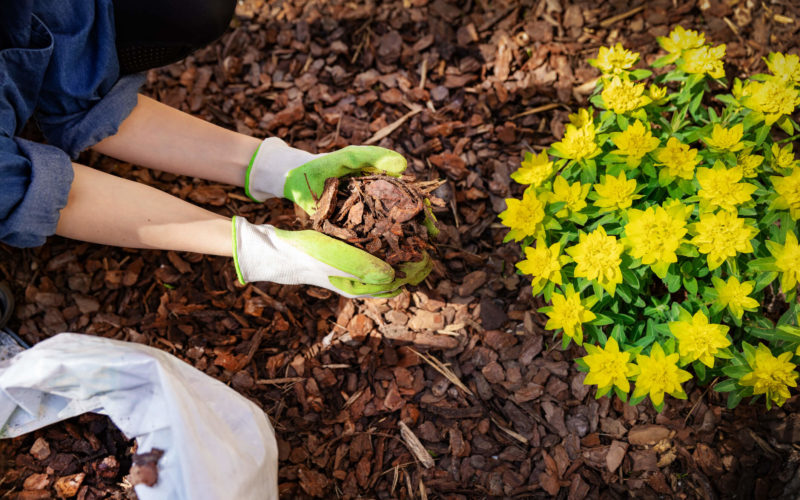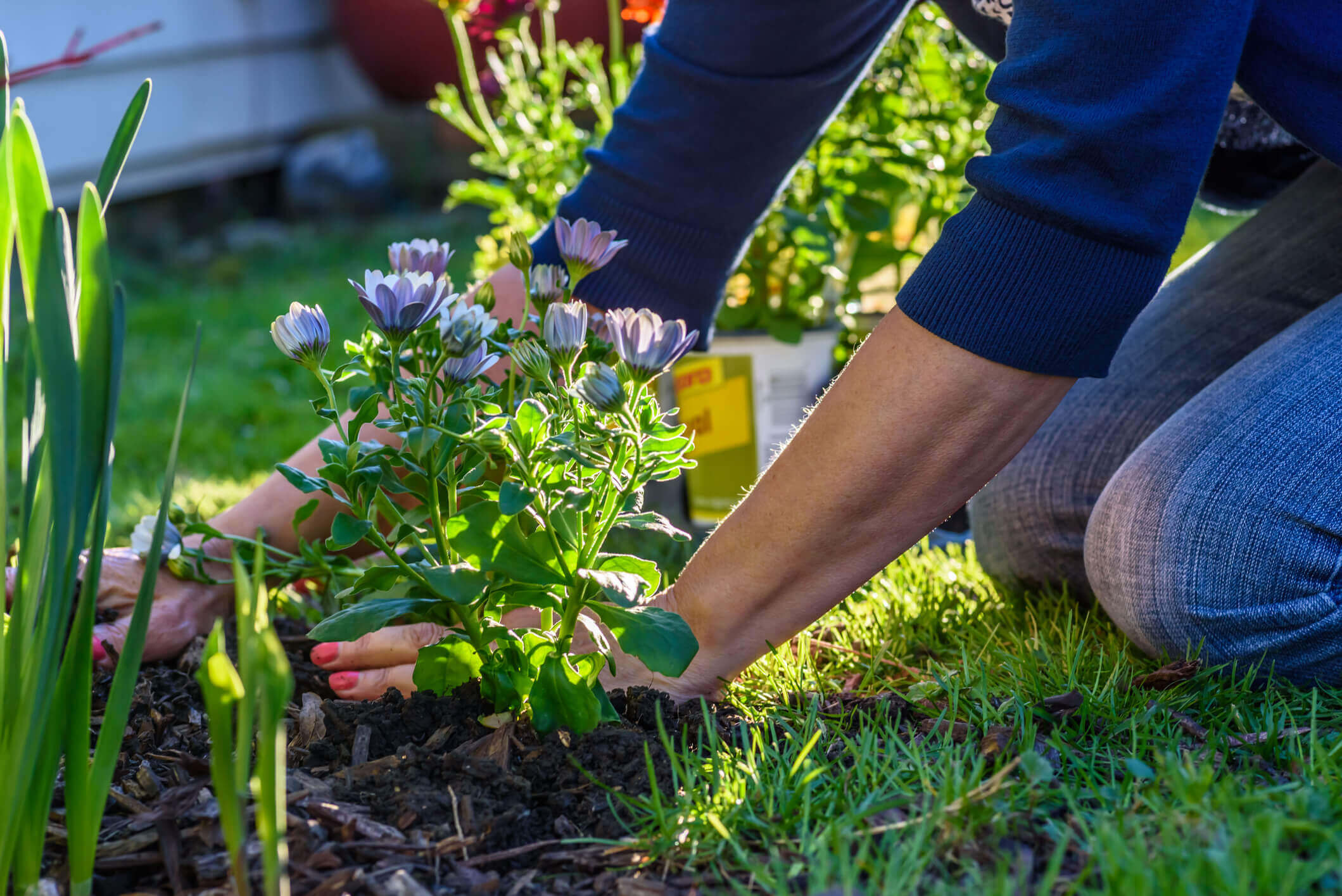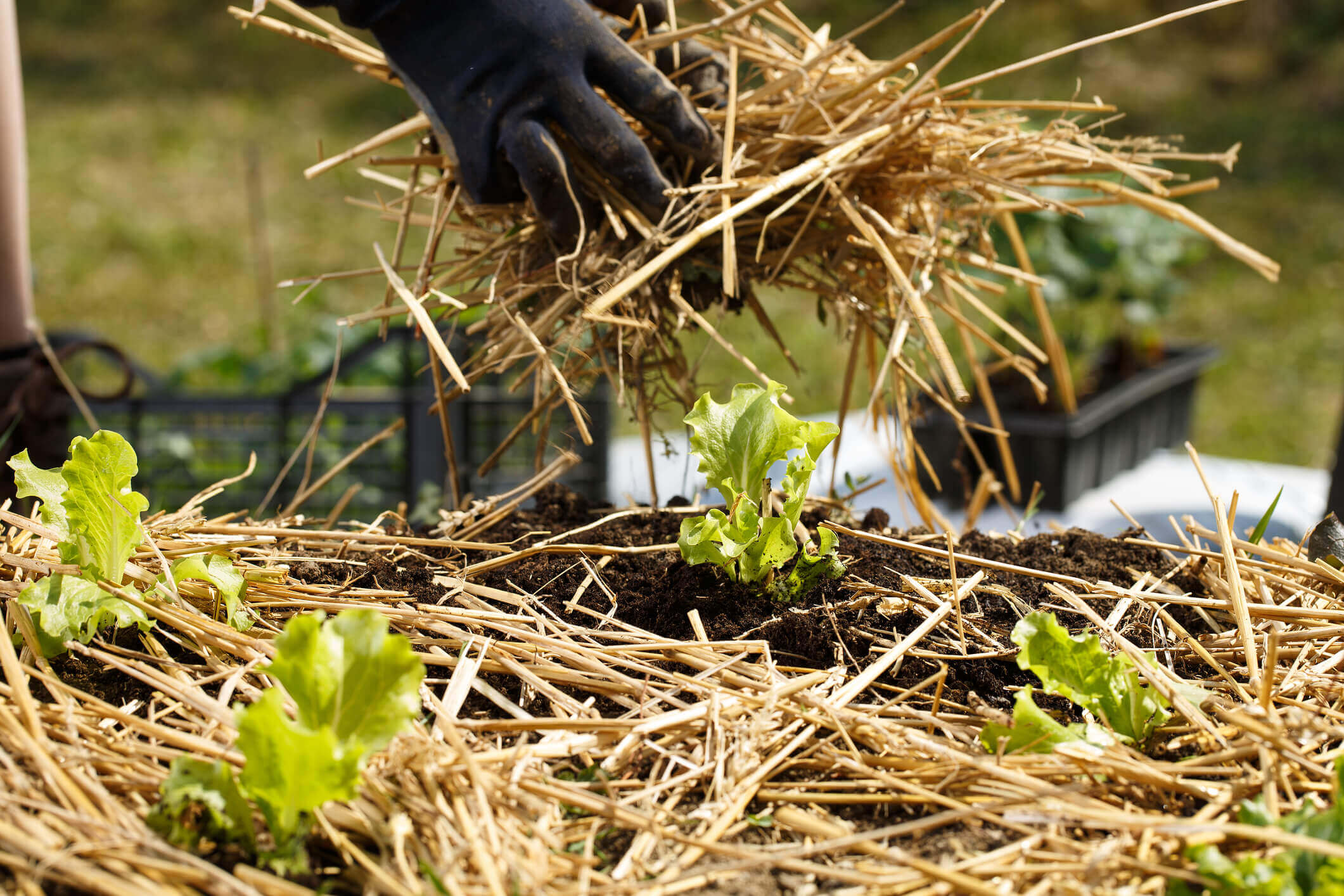What Mulch to Use for Gardens, Swing Sets, and More

It may still technically be winter, but many gardeners are beginning to plan for their spring gardens. If you’re thinking about starting or replanting a garden this spring, you’ll likely want to mulch to keep your space neat and weed-free. Check out our complete guide on what mulch to use for your garden.
What is Mulch Used For?
If you’ve spent hours digging and planting a beautiful garden, the last thing you want is to spend every weekend weeding it. Mulching around your plants will help cut down on weeds so you can spend your time enjoying your garden instead.
Mulch also helps insulate and moisturize your soil. This means perennials are more likely to come back strong and vibrant in the spring, even after a harsh winter. Mulch can also protect your soil and plants in the summer from lawnmowers and erosion from strong summer storms.

Hardwood and bark mulches can even help your soil quality as they break down over time. If your soil isn’t very fertile, mulch can broaden your opportunities for gardening in the long run.
Finally, mulch can provide a softer landing around swing sets, slides, playhouses, and other outdoor structures for kids. It’s great for helping to prevent injuries as your children, grandchildren, nieces, or nephews play in your backyard.
Bagged vs. Bulk Mulch
The question of bagged or bulk mulch largely comes down to quantity and convenience. If you need to mulch a large area and have somewhere to pile your mulch, bulk is likely the best option. With guaranteed next-day delivery, bulk mulch is convenient and won’t make a mess in your vehicle.
Alternatively, if you don’t have a place to pile your mulch or only need a small quantity, bagged mulch may be a better fit. It comes in standard quantities and many of the same varieties as bulk mulch. You can also store extra bagged mulch in a cool, dry location until the next year if you have any left over.
Hardwood / Bark Mulch vs. Stone Mulch
When figuring out what mulch to use, you’ll see two main categories: hardwood / bark and stone. Both types have unique benefits that make them better for some areas than others.
Hardwood / Bark Mulch
Hardwood and bark mulch are both common gardening choices. They can be dyed (usually black or red) or left their natural dark brown color. Hardwood bark mulches will break down over time and will improve the quality of your soil as they decompose.

Stone Mulch
Stone mulch is another common choice for gardens and landscaping. One of the most popular stone mulches is pea gravel, which offers many of the same benefits as hardwood bark. Be sure to edge your mulched areas with larger stones, bricks, or metal edging to prevent your gravel from spilling out and making a mess. You can also opt to use stone mulch around the edges and pair it with hardwood or bark to fill in the center of your garden spaces.
What Kind of Mulch Should I Use?
Since each type of mulch has it’s pros and cons, you may end up purchasing several mulches for different areas or purposes. Here are some of the common areas you may need to mulch and the appropriate choices for each job.
Flower Gardens
Dyed or natural hardwood bark mulch is the most common choice for flower gardens. It adds visual interest and tidiness to your garden beds. Just be sure to keep your mulch three inches away from the bases of your plants to increase air circulation and prevent plant rot.
Vegetable Gardens
When it comes to what type of mulch to use in a vegetable garden, weight is key. Vegetable gardens need their soil turned over each year to keep them fertile. We recommend using a lighter mulch like leaf litter or straw to make turning your beds over easier.

Hardwood bark is another attractive and functional option, but it may take more work to turn over the following year.
Trees & Shrubs
Trees and shrubs are less picky than flower and vegetable plants, which means that you can let aesthetics drive your decision. Hardwood bark, cocoa shells, pea gravel, and larger stones all make for excellent mulch for trees and shrubs.
When deciding what mulch to use around trees and shrubs, you may want to go more decorative. Stone mulches like pea gravel work great around trees and shrubs. As long as they are established, they should be hardy enough to not need the added nutrients of hardwood or bark mulch.
Whichever mulch you choose, make sure to create a donut, not a volcano around your trees when you mulch.
Swing Sets
When mulching around a swing set, at the bottom of a slide, or around any other children’s play equipment, safety is key. Mulching can’t prevent injuries, but adding hardwood bark mulch or pebbles can help provide a softer landing for kids.
Ready to start mulching? Contact one of our Home & Garden Centers to get all of your questions answered!
